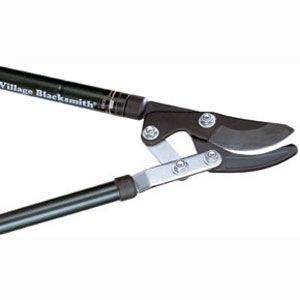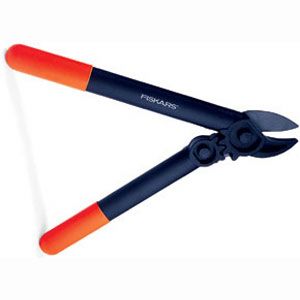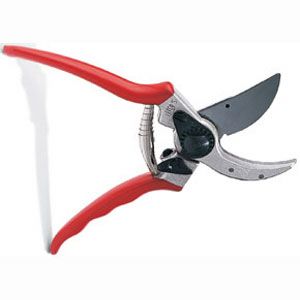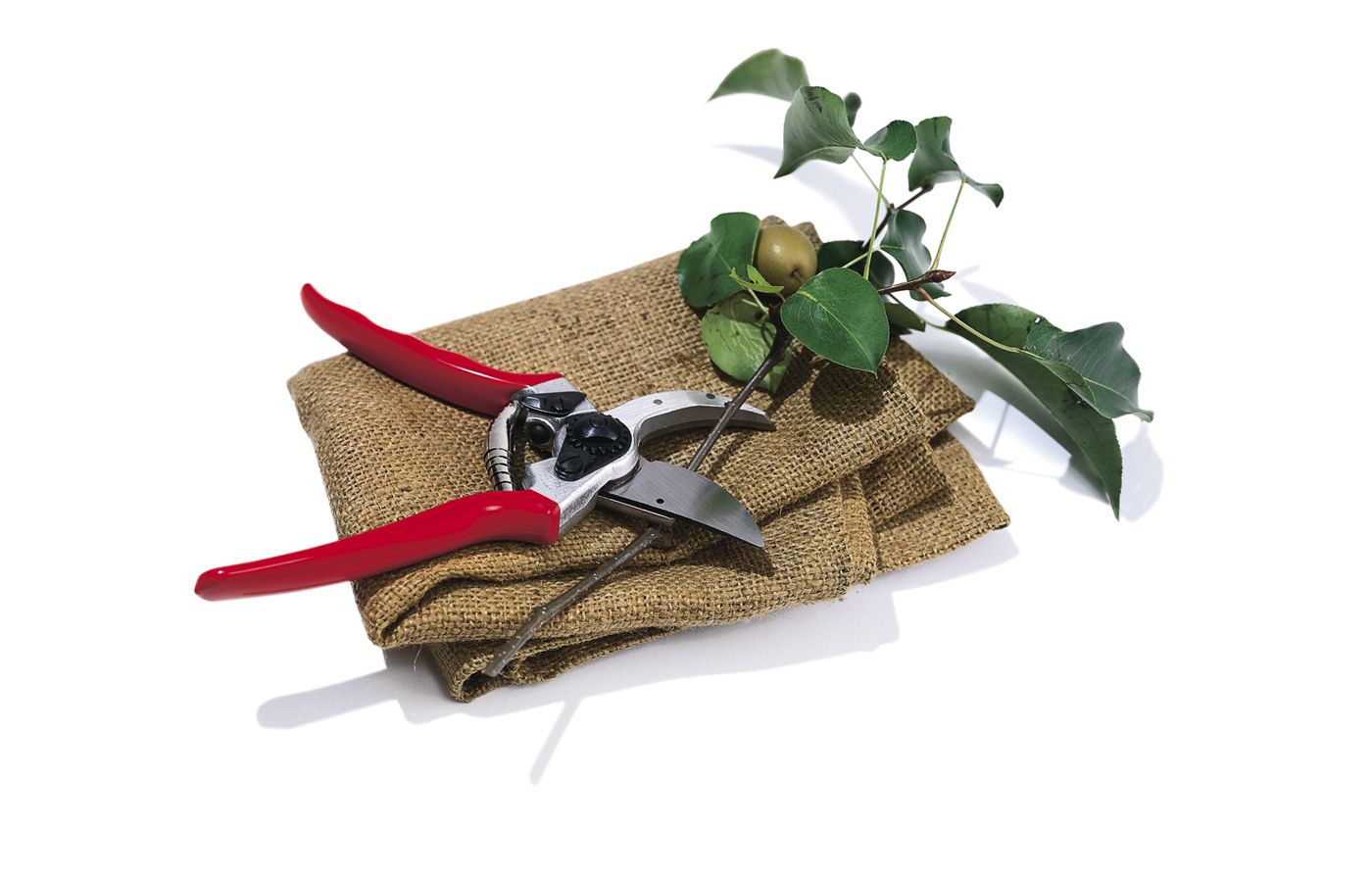Whether you’re trimming rosebushes, shaping shrubs, or cutting back small tree branches, having the right pruning tools can make all the difference. Pruners and loppers are two of the most important tools in a gardener’s arsenal. This guide breaks down the differences between these tools, helps you choose the right ones for your needs, and covers using them effectively to keep your plants in top shape.
Pruners vs. Loppers
Pruners and loppers are both cutting tools used in gardening and landscaping, but they serve different purposes and have distinct features. Let’s explore each tool to help you decide which is best for your pruning.
What Are Pruners?
Pruners, also known as hand pruners or secateurs, are small, handheld tools designed for cutting branches and stems up to about half an inch in diameter. These versatile tools are perfect for precise cuts on smaller plants, shrubs, and thin branches. Because you use pruners with one hand, they’re ideal for quick, detailed work in tight spaces.
What Are Loppers?
Loppers are larger cutting tools with long handles that require two hands to operate. They’re designed for cutting thicker branches, typically ranging from half an inch to around two inches in diameter. The extended handles provide extra leverage, allowing you to cut through tougher wood with less effort than pruners.
Key Differences Between Pruners and Loppers
The main differences between pruners and loppers lie in their size, cutting capacity, and intended use:
- Cutting capacity: Pruners are best for branches up to half an inch thick, while loppers handle branches up to two inches in diameter.
- Leverage: Loppers have longer handles, which provide more leverage. This makes them easier to use to cut through thicker branches.
- Portability: Pruners are more portable. You can easily carry them in your pocket or gardening belt, while loppers are bulkier and less convenient to carry around.
- Precision: Pruners offer more control for detailed work, while loppers are better suited for larger cuts and reaching higher branches.
- Size: Pruners are compact, and you can use them with one hand. Loppers have longer handles and require two hands.

Types of Pruners
There are three main types of pruners. Each type has its strengths and is best suited for specific pruning tasks.
Bypass Pruners
Bypass pruners are the most common and versatile type of hand pruner. They feature two curved blades that pass by each other like scissors when cutting. This design allows for clean and precise cuts on live wood, making them ideal for most pruning tasks.
Key features of bypass pruners:
- Best for live, green branches and stems
- Make clean cuts that promote quick healing
- Suitable for a wide range of pruning tasks
- Available in various sizes and styles
“The first tool you should buy is a pair of bypass pruners,” says Roger Cook, This Old House landscape contractor. “You can use them for everything, so it’s worth investing about $50 for a good pair; cheaper ones can fall apart with all the use.”
Anvil Pruners
Anvil pruners use a straight blade that cuts against a grooved surface called an anvil. This design is best suited for cutting dead or dry wood and can crush live stems.
Key features of anvil pruners:
- Ideal for cutting dead or woody growth
- Provide more cutting power than bypass pruners
- Less precise than bypass pruners
- Can crush or damage live stems

Ratchet Pruners
Ratchet pruners are a variation of anvil pruners that use a ratcheting mechanism to increase cutting power. This design allows you to make cuts in stages, making it easier to cut through thicker branches with less hand strain.
Key features of ratchet pruners:
- Excellent for people with limited hand strength
- Can cut through thicker branches than standard pruners
- Require less force to operate
- May be slower to use than other pruner types
Types of Loppers
Loppers also come in various styles, each designed for specific pruning tasks.
Bypass Loppers
Like bypass pruners, bypass loppers have two curved blades that pass by each other to make clean cuts. They’re ideal for cutting live wood and green branches.
Key features of bypass loppers:
- Best for live branches up to one and a half inches in diameter
- Make clean cuts that promote quick healing
- Available with various handle lengths for different reach requirements
- Suitable for most general pruning tasks
Anvil Loppers
Anvil loppers feature a straight blade that cuts against a flat surface. They’re similar to anvil pruners but longer. They’re best for cutting dead or dry wood and can handle slightly thicker branches than bypass loppers.
Key features of anvil loppers:
- Ideal for cutting dead or woody growth up to two inches in diameter
- Offer more cutting power than bypass loppers
- Less precise than bypass loppers
- Can crush or damage live stems
Compound Action Loppers
Compound action loppers use a system of pivoting arms to increase the pressure applied to the blades, which makes it easier to cut through thicker branches.
Key features of compound action loppers:
- Provide maximum cutting power with minimal effort
- Can handle thicker branches than standard loppers
- Ideal for users with limited strength or those dealing with tough wood
- May be heavier and more expensive than other lopper types
Choosing the Right Tool for Your Pruning Needs
When choosing your pruners, keep these factors in mind:
- Blade quality: Opt for high-quality, sharp blades that will maintain their edge and provide clean cuts.
- Cutting capacity: Check that the pruner can handle the thickness of branches you’ll be cutting most often.
- Comfort: Look for ergonomic designs that fit comfortably in your hand and reduce strain during extended use.
- Locking mechanism: Select pruners with a reliable locking mechanism to keep the blades closed when not in use.
- Spring mechanism: Choose pruners with a strong spring that helps the blades open easily after each cut.

While pruners are versatile tools, there are situations where loppers are the better choice:
- Extended reach: Loppers are ideal for reaching higher branches or cutting in hard-to-reach areas.
- Increased leverage: When dealing with tougher wood or larger quantities of branches, loppers provide more cutting power.
- Pruning trees: Loppers are better suited for maintaining small trees and removing lower branches.
- Reduced hand strain: For extensive pruning sessions, loppers can be less tiring to use than hand pruners.
- Thicker branches: Use loppers for branches over half an inch in diameter.
Proper Techniques for Using Pruners and Loppers
Follow these guidelines for proper technique and safety.
For holding pruners:
- Hold the pruner with your dominant hand, placing your thumb and forefinger in the handle loops.
- Position the blade close to the branch, with the cutting edge facing the part of the plant you want to keep.
- Keep your wrist straight to avoid strain and maintain control.
For holding loppers:
- Grip the handles with both hands, keeping your arms slightly bent.
- Position the blade close to the branch, with the cutting edge facing the part of the plant you want to keep.
- Stand with your feet shoulder-width apart for stability.
Making Clean Cuts: Best Practices
To make clean cuts and promote plant health:
- Always use sharp, clean tools to minimize damage to the plant.
- Cut at a 45-degree angle, about a quarter of an inch above a bud or lateral branch.
- Avoid leaving stubs, which can lead to disease and insect infestation.
- Make cuts in one smooth motion, avoiding twisting or crushing the branch.
- For larger branches, use the three-cut method to prevent bark tearing:
- Make an undercut about a third of the way through the branch
- Make a second cut from the top, slightly farther out on the branch
- Make the final cut close to the trunk or main branch
Safety Precautions While Pruning
To guarantee your safety while pruning:
- Wear protective gear, including gloves and safety glasses.
- Maintain a stable footing, especially when using ladders or reaching overhead.
- Be aware of your surroundings, such as power lines and other potential hazards.
- Keep tools sharp and in good condition to reduce the risk of accidents.
- Never cut branches directly overhead or above shoulder height.
Maintaining Your Pruning Tools
Regular cleaning and sharpening, plus proper storage, will keep your pruners and loppers in top condition for years to come.
Cleaning after each use:
- Wipe blades clean with a cloth or brush to remove sap and debris.
- Disinfect blades with rubbing alcohol or a diluted bleach solution to prevent the spread of plant diseases.
- Apply a light coat of oil to avoid rust and to keep moving parts lubricated.
For a deep clean:
- Disassemble the tool if possible.
- Scrub all parts with warm, soapy water and a brush.
- Rinse thoroughly and dry completely before reassembling.
To keep your pruners and loppers sharp:
- Use a fine-grit sharpening stone or file.
- Follow the original angle of the blade, typically around 20–25 degrees.
- Sharpen only the beveled edge of the blade.
- Make smooth, even strokes from the base to the tip of the blade.
- Remove any burrs with a fine-grit sandpaper.
Proper storage helps prevent damage and rust:
- Clean and dry tools thoroughly before storing them.
- Store tools in a dry, protected area.
- Hang tools or store them in a tool rack to prevent damage to blades.
- Keep blades closed and locked when not in use.
- Apply a light coat of oil before long-term storage.
Common Pruning Mistakes To Avoid
Even experienced gardeners can make mistakes when pruning. Being aware of these common errors can help you avoid damaging your plants or tools.
Overreaching and Straining
Avoid:
- Stretching beyond your comfortable reach
- Using tools that are too heavy or unwieldy for extended periods
- Pruning for long sessions without taking breaks
Instead:
- Use tools with appropriate handle lengths for your height and reach
- Take frequent breaks to prevent fatigue and maintain focus
- Use ladders or pole pruners for high branches instead of overreaching
Using the Wrong Tool for the Job
Avoid:
- Using pruners on branches that are too thick
- Attempting to cut dead wood with bypass pruners
- Using dull or damaged tools
Instead:
- Choose the appropriate tool based on branch thickness and type of wood
- Use anvil pruners or loppers for dead or dry wood
- Keep tools sharp and in good condition
Neglecting Tool Maintenance
Avoid:
- Storing tools without cleaning them
- Using dull blades that crush rather than cut
- Ignoring rust or damage to tools
Instead:
- Clean and oil tools after each use
- Sharpen blades regularly
- Inspect tools for damage and repair or replace as needed
Pruners and Loppers: Our Conclusion
Pruners and loppers are essential tools for maintaining a healthy and attractive garden. By understanding the different types of pruners and loppers, choosing the right tool for each task, and using proper techniques, you can make sure that your plants receive the care they need to thrive. Remember to invest in quality tools, maintain them properly, and always prioritize safety when pruning.

